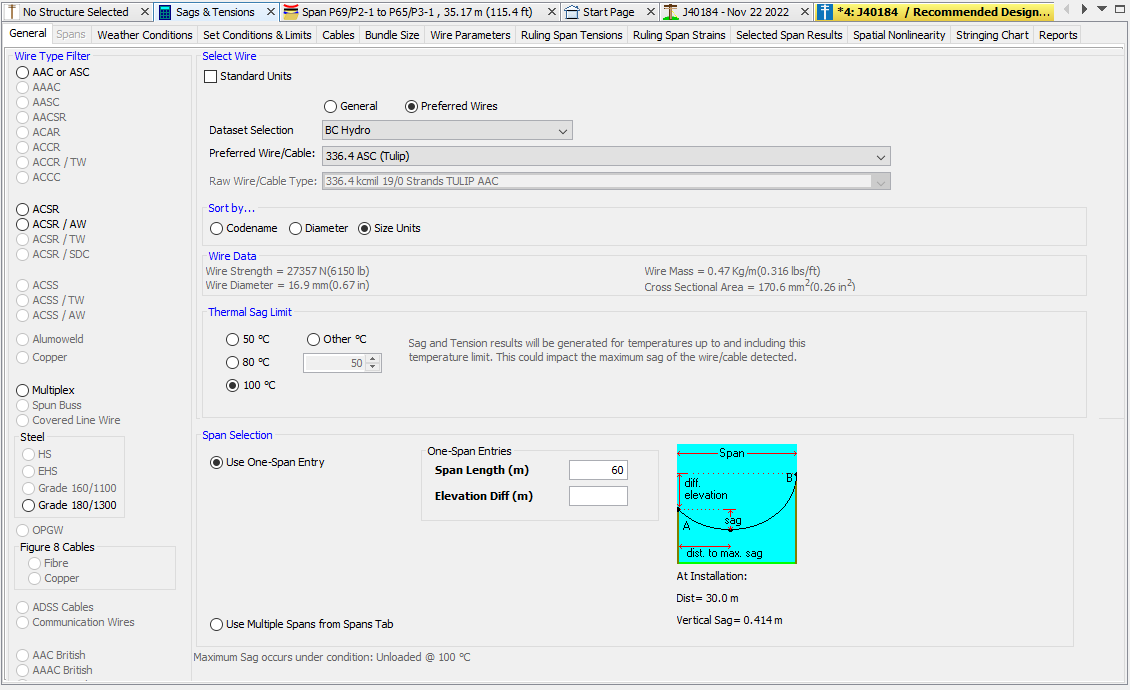General Tab

In this Tab you select the exact Wire or Self Supporting Cable you wish to evaluate. The left-hand side of Radio Buttons serves to filter the listing of wires in the Wire selection box by category. Within the selected Dataset Selection, only Radio Buttons that correspond to valid categories will be enabled and able to be selected as filters. To aid the selection of a wire, you can also have the wire selection box's listing sorted by Codename, Diameter or Size. Codename and Size are optional in the Database, but are valuable as useful selection and sorting attributes if present.
There are two different Dataset categories available for selection; those defined as standards by an Organization as Preferred Wires and "General" wires which are not. Each category of Dataset will have a Dataset selection for each Organization defined in the DataManager. There may be no wires defined for some Dataset and Organization category combinations.
Thermal Sag Limit
This Tool evaluates wires and Self Supporting Cables under a wide range of conditions. One of these variables is temperature with no wind or ice loading. As all materials will have more sag and less tension at higher temperature, it is important to tell this Tool how high in temperature to evaluate Sags and Tensions. Since you could want to know what the maximum Sag condition and value is, you want to limit tests to conditions you want to use the wire/cable. The Thermal Sag Limit Radio Buttons will automatically change to default values based on the Wire Type Category selected on the left-hand side. You may want to change the default value. which is why this Tool exposes the default value calculated and enables you to change it.
Default Values:
- 50 °C - wires/cables for communication purposes and other wires not designed to carry current.
- 50 °C - multiplex (Triplex, Quadruplex) wires with same size neutral wire. Assumed that the neutral is designed to carry less than 35% rated amperage under non-fault conditions. Smaller neutral wires would not qualify.
- 80 °C - covered wires designed to carry current.
- 100 °C - bare wires designed to carry current
Span Entries
The distance between poles (span length) is a key factor in Sag and Tension calculations. This tab provides a simple one span length and attachment elevation difference entry. Alternatively you can use the multi-span entry available in the Spans Tab. Select the entry option you wish.